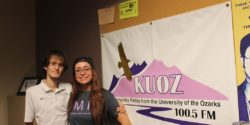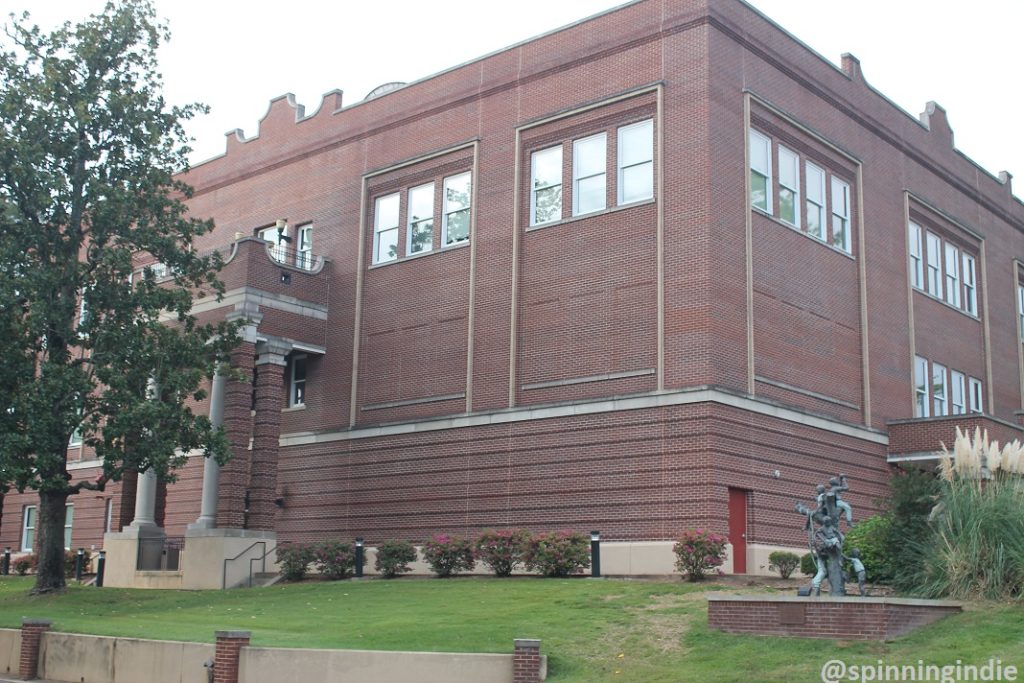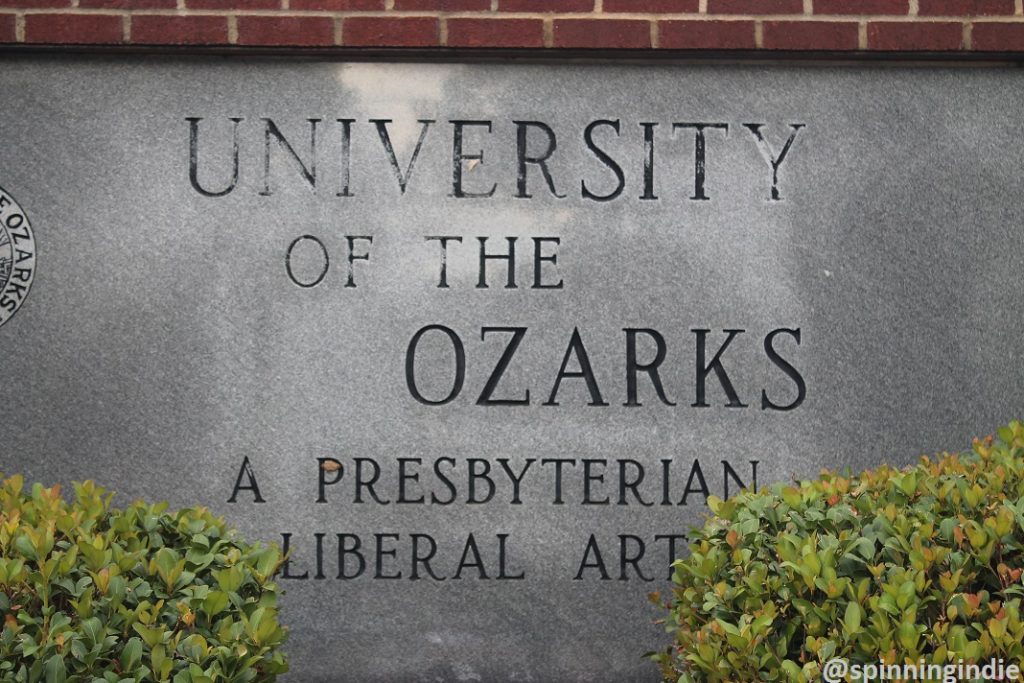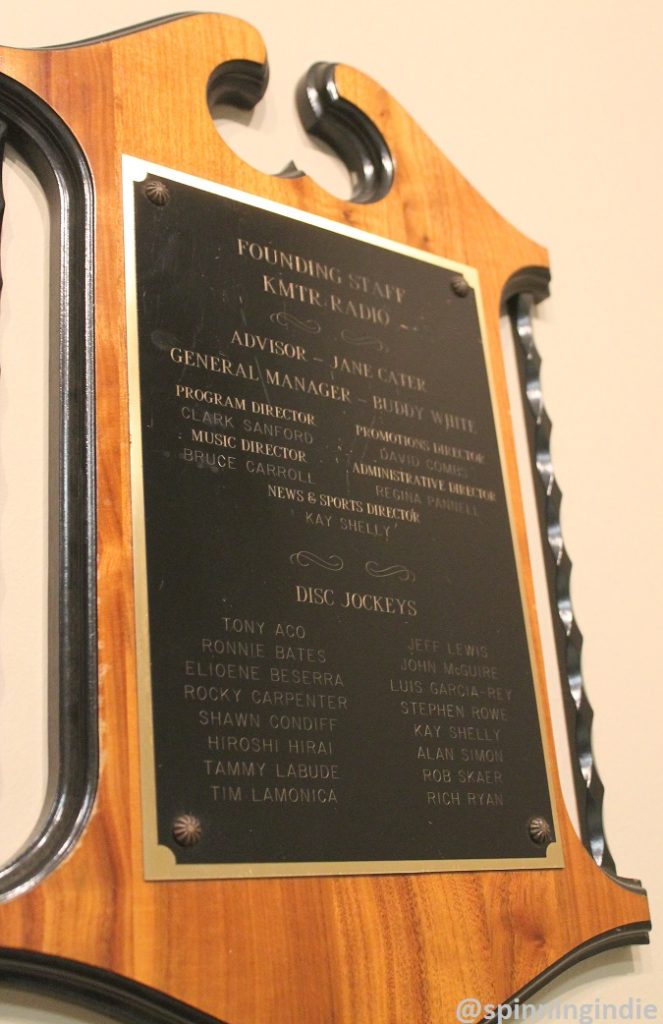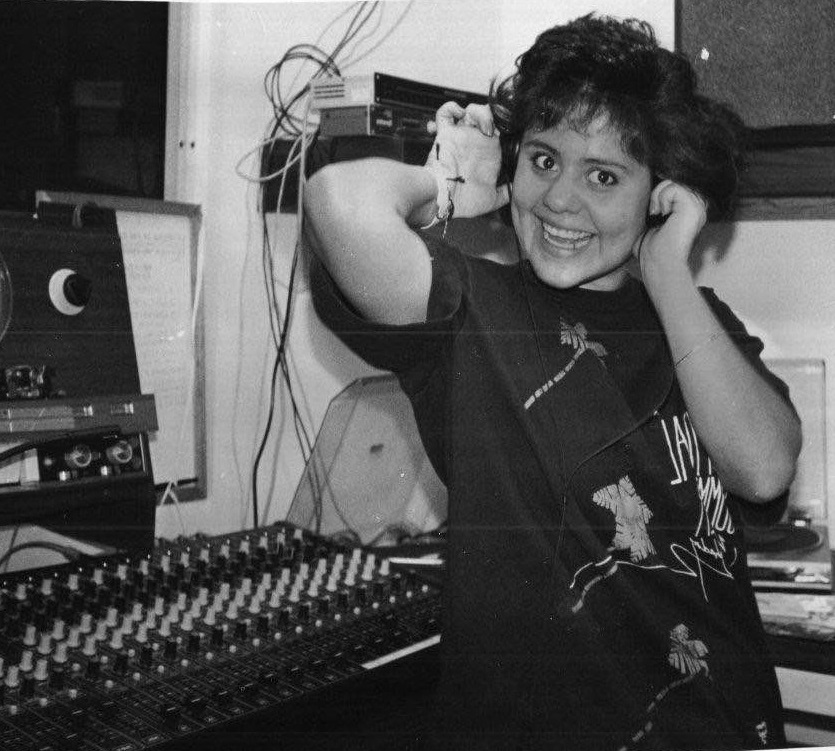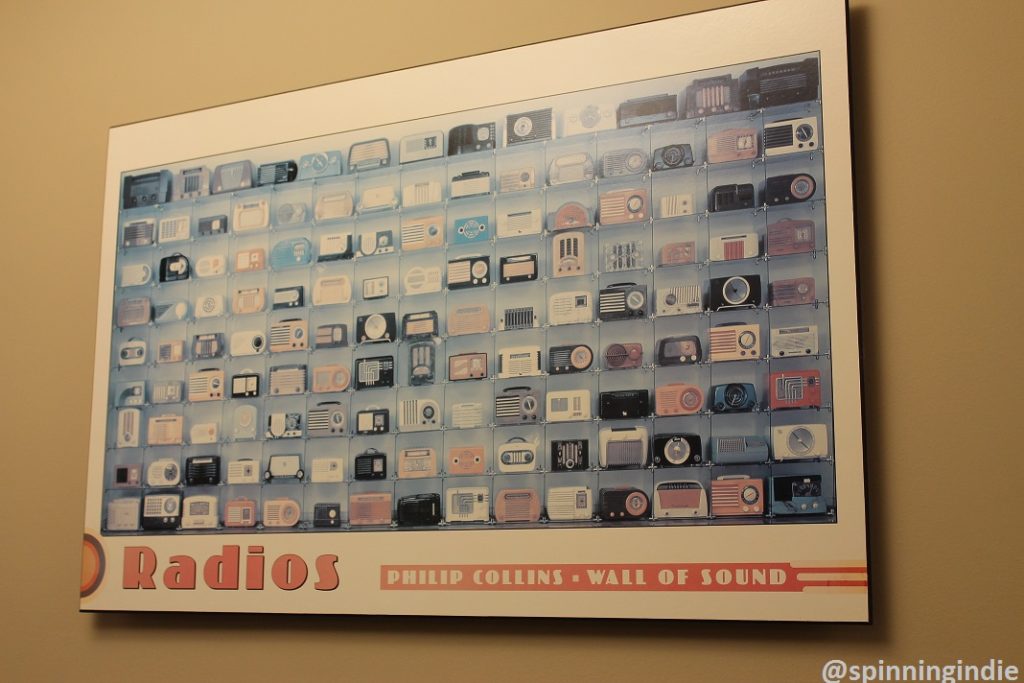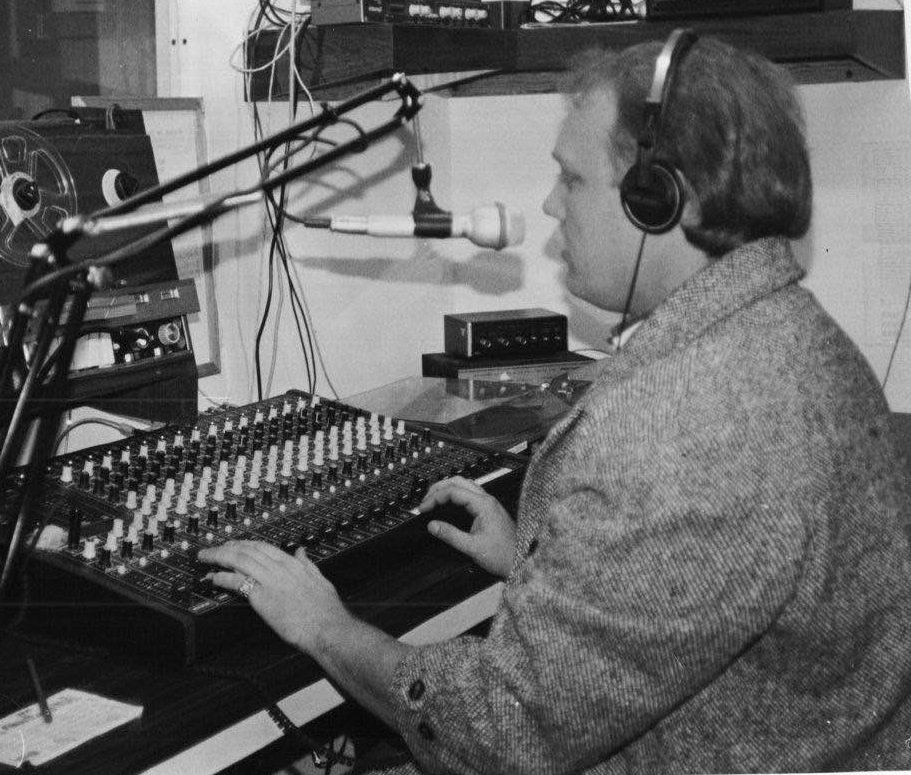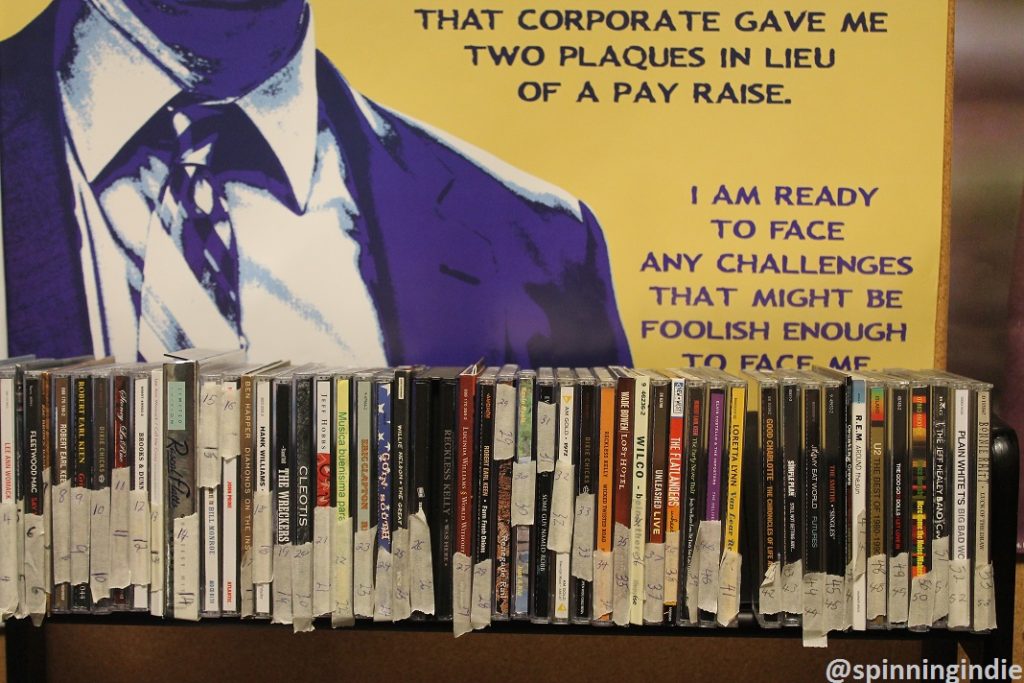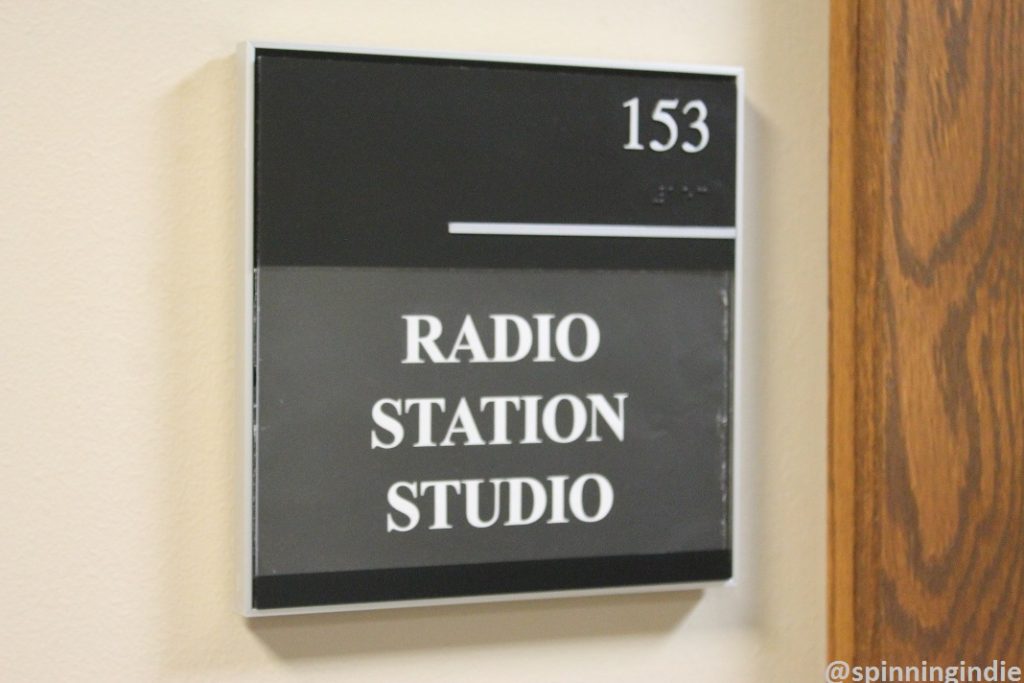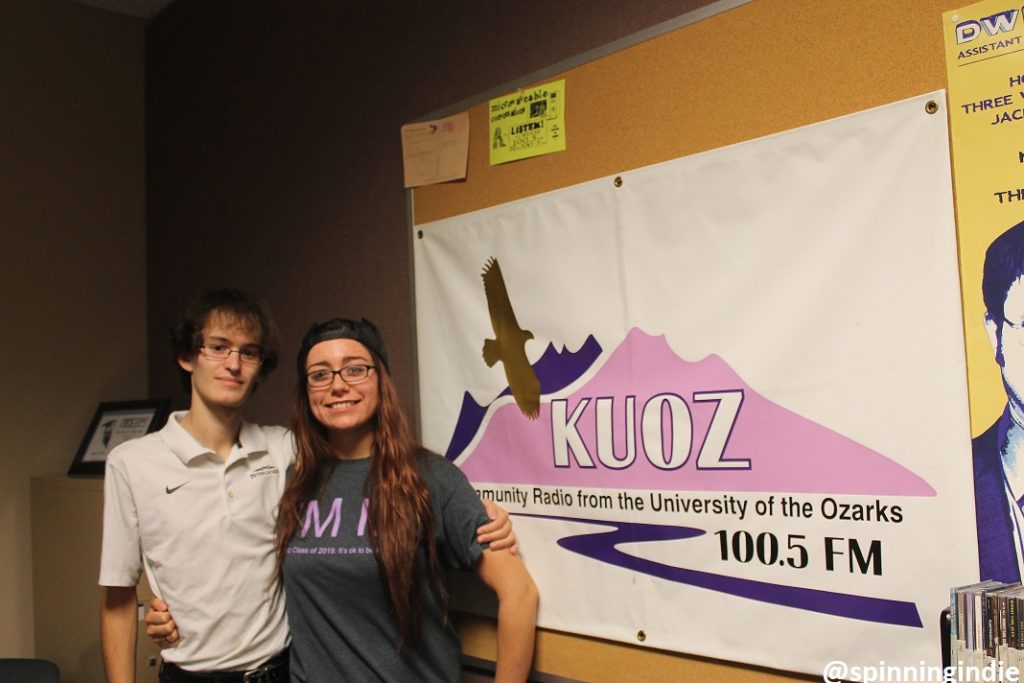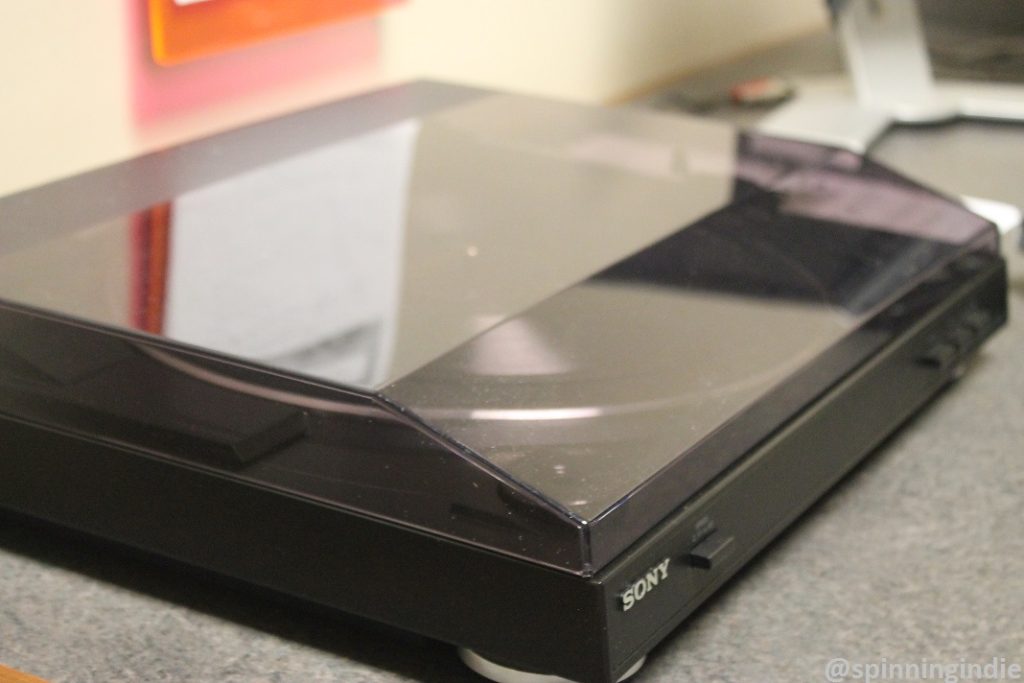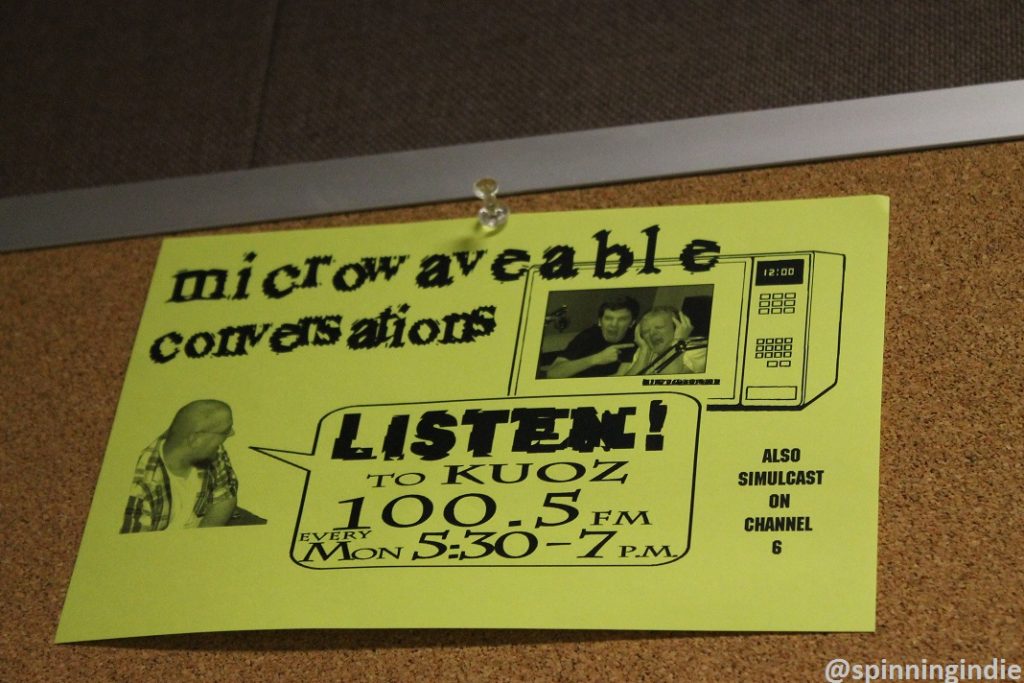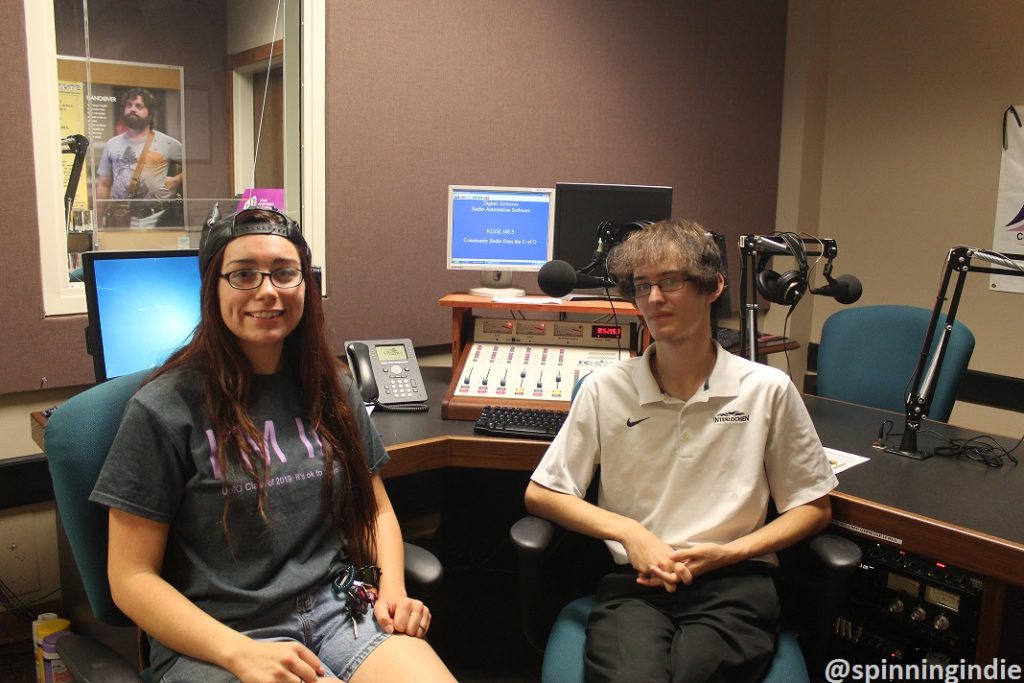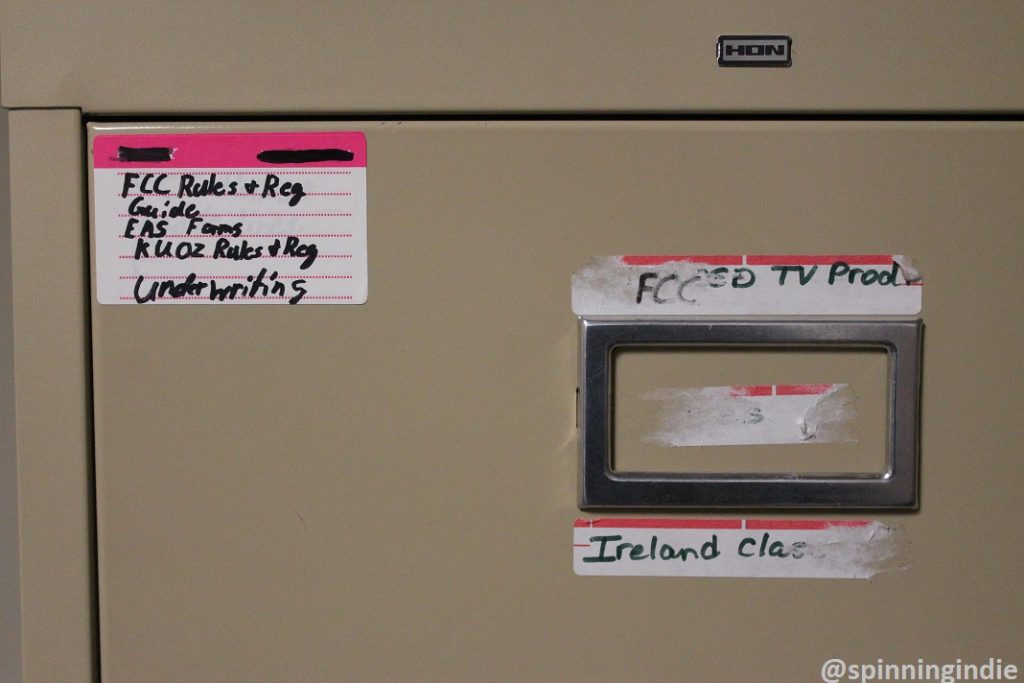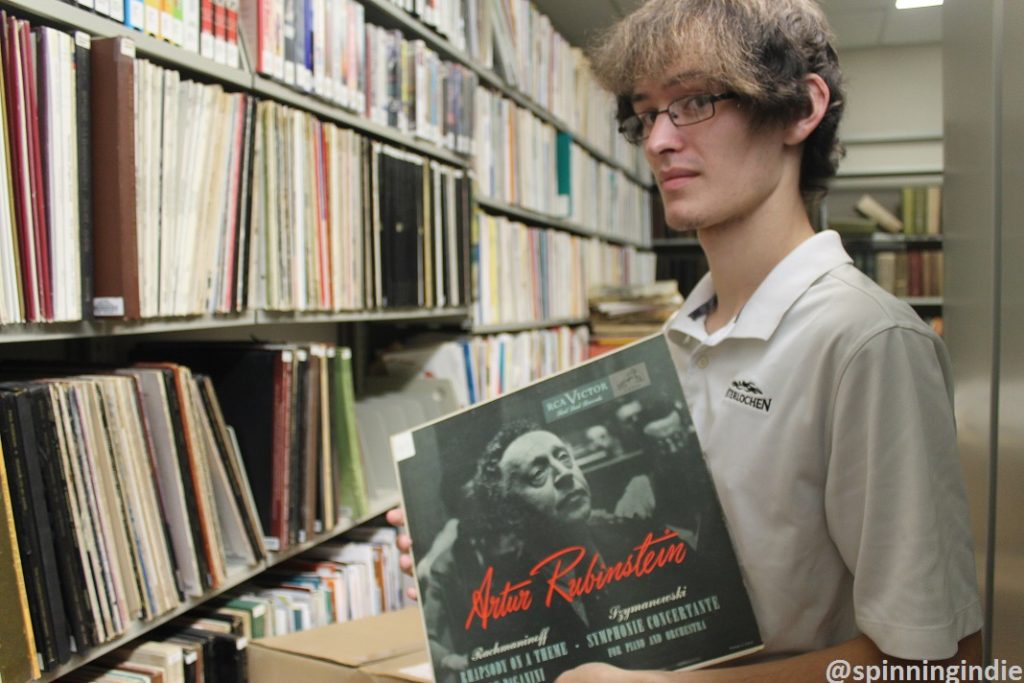After waking before dawn and grabbing breakfast at a nearby Waffle House (we don’t have them in California!), I began a beautiful drive from Fayetteville, Arkansas to Clarksville, in order to see college radio station KUOZ-LP at University of the Ozarks. Lyrics to the Monkees song “the Last Train to Clarksville” kept swirling in my head as I made my way and I didn’t find out until months later that the track had special significance for college radio at the school. More on that later…
Approaching campus, I caught glimpses of the town, including a cemetery, Dairy-Freeze, Sugar Daddy’s Pizza Shack, and Shooters Gun & Pawn. A nearby Wal-Mart also hinted at the chain’s Arkansas roots. I’d heard that Wal-Mart family (the Waltons) wealth was everywhere in Arkansas and saw signs of that at University of the Ozarks too. The small university (with less than 700 students) has been the beneficiary of some large donations from the Walton legacy, including a very recent $10 million gift from the Walton Family Foundation (announced during the week of my visit) that will be earmarked for scholarships.
History of College Radio at University of the Ozarks: From Carrier Current to LPFM
A low power FM (LPFM) radio station from the first LPFM window, KUOZ-LP’s license was granted and the station was launched in 2003. Before KUOZ, a campus-only radio station, KMTR, operated at the college. According to the KUOZ Facebook page, “From the 1980’s to the 1990’s, KMTR was the university radio station and aired on a closed circuit system.” A plaque on the wall of the station acknowledges KMTR’s founding staff, but gives no further details about the station. Of course that means that I’m intrigued…
A feature on KUOZ in a 2004 issue of University of the Ozarks Today reveals a bit more, stating, “The nonprofit, community radio station is the university’s first FCC station. Ozarks has sponsored closed-circuit and cable access radio stations on campus in the past.” After doing some sleuthing, I tracked down Jane Cater, Professor Emerita, University of the Ozarks and the advisor for University of the Ozarks first radio station KMTR. By email, she shared more about the station’s history, telling me that the station began in the 1984-1985 school year at what was at the time called the College of the Ozarks (it became University of the Ozarks in 1987). The station ceased operations in the 1999-2000 school year. According to Cater,
…I was approached by a small group of my Communications students who were interested in having a real-world lab in the newly formed Communications major. We discussed the possibility of Radio, their primary interest, and while I sought to find initial funding for equipment, I asked them to find the amount of interest among the student body, plus seek the support of the Student Government Association.”
KMTR launched in 1984 (the first song played was the Monkees’ “The Last Train to Clarksville”!) as an AM carrier current radio station, with its signal fed to three dorms (Maclean Hall, King Hall and Smith Hall). According to Cater, “The programming could be picked up on AM radio for about 100 to 200 yards from the dorms as well as in the dorms.”
Cater explained that students selected the call letters KMTR, which stood for Mountain Radio. It was in keeping with a theme on a campus whose mascot at the time was the Mountaineer and where the student newspaper was the Mountain Eagle. According to Cater, “Our Alma Mater was filled with references to mountains, eagles, aeries, and hilltops high.”
In 1990, the school received a cable access channel. Cater writes, “…KMTR moved into live programming on that channel a few hours a day. The students enjoyed the much wider audience–a few thousand listeners, as opposed to the few hundred in the dorms before. When the station was not live, CD music in rotation was … [played in the background behind] …campus and community messages.” She added that the station grew during this time and had a “staff of about 35 students, with a Student Manager and Board of Directors during the 90s.”
Touring KUOZ-LP
Now on to the tour! KUOZ’s General Manager Corbin Sturch and Music Director Anna Fisk met up with me early in the morning on October 7, 2016 for a tour. Their passion for the radio station was infectious, with Fisk telling me that after being asked to DJ at the station by a friend, “I fell in love with the whole experience.”
Sturch joined the station as a freshman and said that he had been aware of college radio before getting to campus, but couldn’t listen to it regularly. He had limited radio options in his small hometown in rural Arkansas, where he didn’t have internet access at home until his senior year of high school. Both Sturch and Fisk were proud of KUOZ’s recent accomplishments, including an increase in online listeners in the past semester. Additionally, they mentioned how exciting it is to walk into local businesses and hear the station playing, including at a Subway in town.
The programming is eclectic and the type of music played “depends on when you tune in,” according to Fisk. Genres range from classical music to country/classic rock to jazz and bluegrass. A live sports talk show airs on Mondays and in the past the station ran live sports broadcasts. KUOZ also airs the school’s chapel service (which is recorded every week for the TV station) on Sundays and also runs some syndicated shows, including Democracy Now and programming from the Mayo Clinic. The team running the station is small and mighty and includes about 6 student staff in addition to DJs. Sturch and Fisk said that up to 10 people come through the station every week, but acknowledged that the number has been growing every week. Sturch added that the station has been in a “long reconstruction period” during the semester that I visited.
Those involved with KUOZ are all students and in order to participate, one needs to first take a communications class. With that said, Sturch added that the professors are more like “mediators” who work to “guide” students at the station. Fisk added that the faculty members are “hands off unless they have to be.”
Although there’s talk that terrestrial radio is not as relevant to young people, Sturch and Fisk disagreed. While KUOZ also streams online, Sturch told me that the station’s LPFM signal is “essential,” explaining that the college radio experience at University of the Ozarks would be completely different if they didn’t have FM. Because of the FM license, he argues that they have the opportunity to interact more with local businesses for events, live remotes, underwriting and more. Additionally, KUOZ needs to comply with various regulations surrounding FCC licensing and also antenna maintenance, which adds to the sense of pride and responsibility. Fisk said that also she likes getting in her car and being able to listen to the station, saying that it makes the experience of doing radio “very tangible.” When I mentioned the stereotype that young people don’t listen to radio, Sturch emphatically retorted, “That’s a lie.”
On the day of my visit, the station was broadcasting on automation from its production studio due to some technical issues in the on-air studio. I was told that during live shows, most DJs play a mix of digital music (the station has a library of around 800 tracks) and CDs. There are some boxes of vinyl records at the station as well as in the closed stacks at the campus library. Prompted by my questions about the station’s LPs, Sturch took me on a walk to the university’s library in order to see the vinyl collection. Just like the old days, anyone can walk into the library, search through a card catalog, and check out or listen to vinyl records. Shelves were full of classical records, as well as a wide array of obscure titles and genres, including Library of Congress and Folkways LPs that captured miner songs, cattle calls, sea shanties and more.
Thanks to Corbin Sturch and Anna Fisk for the great visit to KUOZ-LP! This is my 119th radio station field trip report. Watch this space for more tours from my October trips to Arkansas and Pennsylvania. See my most recent field trips on Radio Survivor and peruse a full list of my station tour reports on Spinning Indie. 2/21/17 update: we talk about this visit and hear audio from my KUOZ-LP tour on Radio Survivor Podcast #82.

